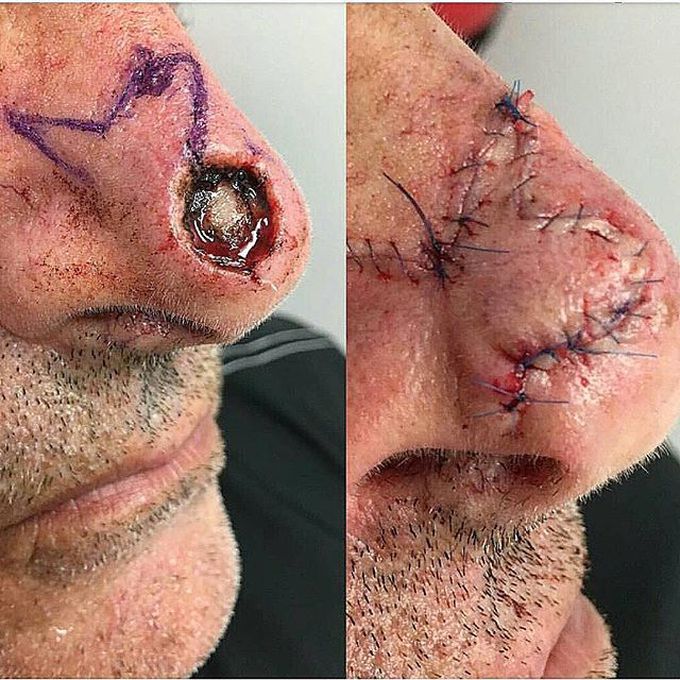


Patient after removal of a basal cell carcinoma!! . Basal cell carcinoma (BCC for short) is the most common form of skin cancer (about 75%) especially in fair-skinned individuals with a history of heavy sun exposure, occurring on the face, head, and neck in most cases. It is a nonmelanocytic cancer arising from the basal cells and usually features an open sore that bleeds, oozes, or crusts. The superficial BCC presents as a reddish patch, an irritated area, or a pale scar-like area with poorly defined and rolled (raised) borders. This patient underwent a Mohs micrographic surgery to treat his condition, which involves a sequential removal of thin skin layers with microscopic inspection to confirm that the margins have been cleared of malignant tissue. A flap surgery followed shortly after. Flap surgery is a technique in plastic and reconstructive surgery where any type of tissue is lifted from a donor site and moved to a recipient site with an intact blood supply. This is similar to but different from a graft, which does not have an intact blood supply and therefore relies on growth of new blood vessels. Local flaps are created by freeing a layer of tissue and then stretching the freed layer to fill a defect. This is the least complex type of flap and includes advancement flaps, rotation flaps, and transposition flaps, in order from least to most complex.
Hemodynamic stimuli&nonhemodynamic stimuliEffects of sugar on teeth

